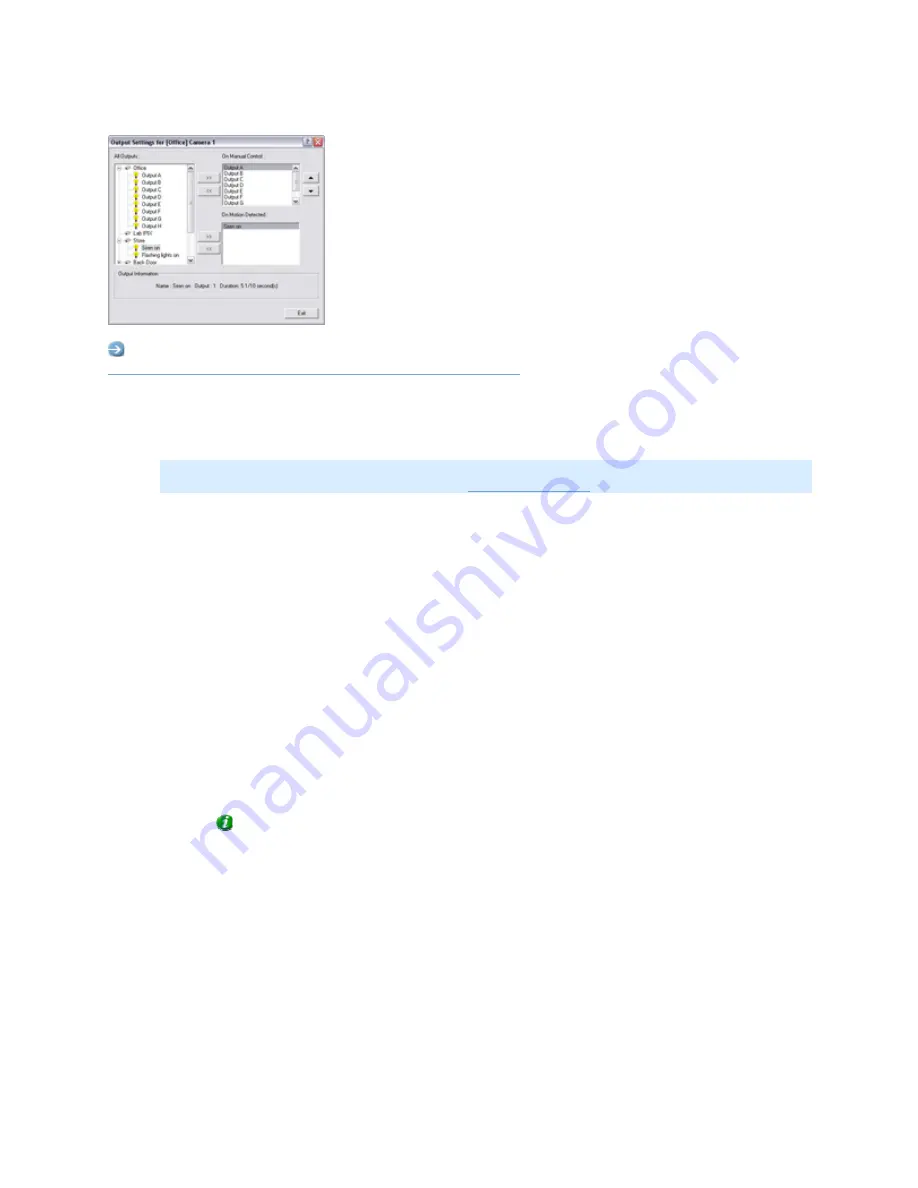
On-Net Surveillance Systems, Inc.
NetDVMS 6.5f User Manual
Input, Events & Output
53
Access: You access the Output Settings for [Device Name] [Camera Name] window from the
Camera Settings for [Device Name] [Camera Name] window
, by clicking the Outputs... button.
Associating Outputs with Manual Control and Detected
Motion
Note: Use of features in the Output Settings for [Device Name] [Camera Name] window
requires that output has been defined in the
I/O Setup window
.
You have a high degree of flexibility when associating a camera with particular outputs:
•
You are able to select between all available outputs, i.e. outputs defined as output
events for the camera itself as well as outputs defined as output events for other
devices on the NetDVMS system
•
The same output may be used for manual control as well as for automatic triggering
when motion is detected
Selecting Output for Manual Control
You are able to specify outputs to be triggered manually from a list in NetGuard, Ocularis
Client Lite or NetGuard-EVS.
To specify an output for manual triggering in an OnSSI client, do the following:
1.
Select the required output in the All Outputs list in the left side of the Output Settings
for [Device Name] [Camera Name] window.
Tip: When you select an output in the All Outputs list, you can view detailed
information about the selected output under Output Information in the lower part of
the window.
2.
Click the >> button located between the All Outputs list and the On Manual Control
list. This will copy the selected output to the On Manual Control list.
An unlimited number of outputs may be selected this way.
You are able to determine each output’s position in NetGuard’s and NetGuard-EVS’s output list
by moving the selected output up or down in the On Manual Control list with the up and down
buttons located to the right of the list. The selected output is moved up one step each time
you click the up button. Likewise, each time you click the down button, the selected output is
moved down one step.






























